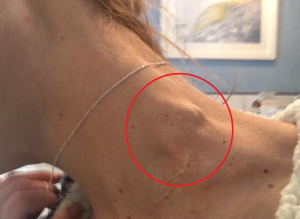
77 years of age are Monique. She visited the eye clinic at the Université of Montréal, where I teach, and that is how I got to know her. Monique, a retired teacher, credits her good health for allowing her to live an active and full life with her family, students, and friends.
She is worried, though, because a recent vision loss makes it difficult for her to read and take pleasure in her painting classes. Also, it makes it difficult for her to drive defensively, which is necessary if she wants to keep her independence.
Monique had developed cataracts, and a thorough examination of her eyes and vision immediately identified the root of her issues: her retina exhibited early signs of macular degeneration.The metabolism of the crystalline lens is unique and extremely delicate. The lens develops deposits and loses transparency when it is disturbed. In order to safeguard the retina in the back of the eye, this lens also absorbs a significant portion of the sun’s UV rays.
Treatment for cataracts is really easy. The native lens of the eye will be removed during surgery and replaced with an implant, which is a new lens. Although this surgery is quite safe and may be done at any stage of cataract development, it is typically only recommended if the patient’s eyesight and quality of life are significantly affected.
Implants don’t need to be replaced because they are permanent and clear for life. Via the use of a specifically created toric implant, they can be utilized to address distance vision issues, including astigmatism. Moreover, nearsightedness can be treated with bifocal or multifocal implants, usually eliminating the need for glasses in the future.
The amount of UV absorbed increases with time, hastening the lens’s premature aging. It is advised to use sun lenses as early as possible to protect your eyes from the sun.This is especially true for Monique, who is beginning to experience age-related macular degeneration (AMD). One percent of those over 40 are affected by this syndrome, but by the time they are 80, it accounts for 30% of all cases.
Caucasians (those of European descent) and women predominate in the at-risk population. Systemic disorders, including everything that affects blood vessels, including diabetes, high blood pressure, high cholesterol, and obesity, as well as oxidative risk factors including smoking, a diet heavy in saturated fats, and UV exposure, are significant risk factors.AMD treatments are limited and aim to limit the progression of the disease. They cannot cure it. Quitting smoking, good nutrition, regular exercise and following the doctor’s recommendations in the control of vascular diseases such as diabetes and hypertension, can delay the progression of the dry form of AMD.
Wearing sunglasses also helps, even on cloudy days. Taking omega 3 at the right dosage and fish oil extracts may help although more recent results have called this strategy into question.
In more advanced stages of the dry form, taking oral nutritional supplements including vitamins and antioxidants are recommended, except in some patients with a particular genetic profile.






